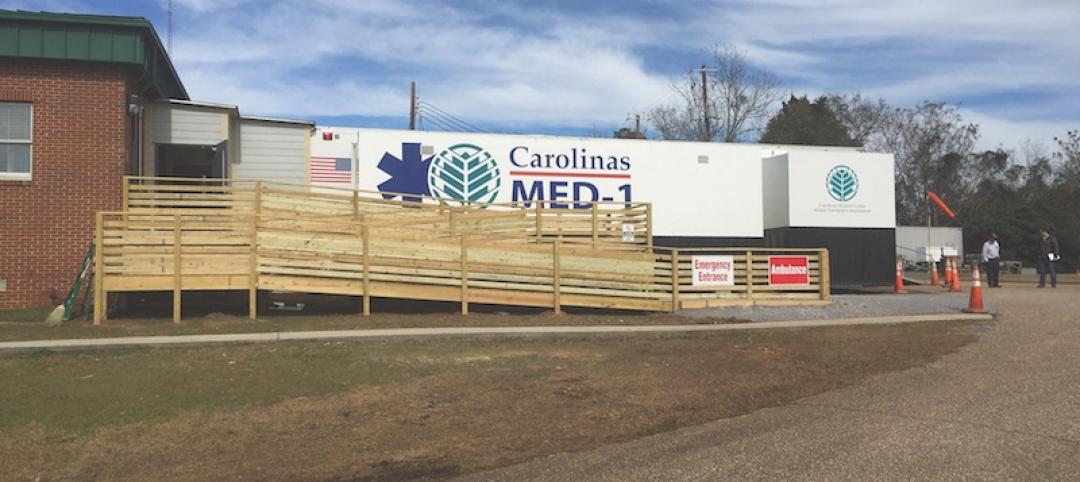What was once a busy thoroughfare filled with exhaust fumes and the sounds of honking horns becomes a quiet strip of land, its oil-stained concrete reclaimed by nature and the angry honks of traffic relegated to the past. This reclamation of New York’s streets may seem like a post-apocalyptic vision in a dystopian summer blockbuster, but it’s actually a radical new proposal from New York-based Edg, an architecture, engineering, and consulting firm, that would bring 24 miles of park space to New York City’s street grid.
Loop NYC leans heavily on driverless cars to create a new traffic flow around Manhattan. Existing cross streets and highways are converted into driverless expressways to optimize traffic flow in and out of the city.
The FDR and West Side highways will have one lane of traffic in each direction designated for autonomous vehicles. These highways will connect to major Manhattan streets, which themselves will be transformed into driverless car expressways. Featuring driverless vehicles exclusively would be 14th Street, 23rd Street, 34th Street, 42nd Street, 57th Street, 86th Street, and 110th Street. Pedestrian overpasses and underpasses will be installed around these streets to physically separate the vehicles and the pedestrians.
 Courtesy Edg.
Courtesy Edg.
The driverless cars can circulate using any combination of the new expressways and loops to expedite travel. Edg calculated the efficiency of Loop NYC to go from Grand Central Station to Lower Manhattan and back. This route would traditionally take about 40 minutes. With the Loop NYC plan in place it would only take 11 minutes.
 The proposal would designate some of New York’s busiest and widest streets to be used exclusively by driverless cars, significantly reducing travel times. Other streets, such as Broadway and Park Avenue, would eliminate cars completely and instead become pedestrian-friendly gardens, parks, and green space. Courtesy Edg.
The proposal would designate some of New York’s busiest and widest streets to be used exclusively by driverless cars, significantly reducing travel times. Other streets, such as Broadway and Park Avenue, would eliminate cars completely and instead become pedestrian-friendly gardens, parks, and green space. Courtesy Edg.
With the more efficient traffic flow, once congested streets could be reclaimed as park space with walking paths and bike lanes. A 13-mile-long pedestrian park would stretch from Battery Park in Lower Manhattan, run through Union Square, and then continue north on Broadway and Park Avenue. Broadway will become its own linear park filled with pathways and pedestrian bridges meant to mimic natural rolling hills.
The proposal builds on a current theme found in cities around the world to become greener, more pedestrian-friendly, and less reliant on cars. However, Loop NYC remains highly speculative for several reasons. Chief among them is the fact that a world of truly autonomous cars is still years away.
 Courtesy Edg.
Courtesy Edg.
Related Stories
Great Solutions | Feb 3, 2017
Drone-based hospitality concept looks to make nomads of us all
Driftscape could take the resort industry to places no hotel has ventured before.
AEC Tech | Sep 6, 2016
Innovation intervention: How AEC firms are driving growth through R&D programs
AEC firms are taking a page from the tech industry, by infusing a deep commitment to innovation and disruption into their cultural DNA.
Great Solutions | Aug 23, 2016
GBBN designers take on wellness research
In a new research paper, three healthcare specialists present factors that contribute to a psychological state that is receptive to healing.
Great Solutions | Aug 23, 2016
Visual energy model database demystifies net-zero design
Diamond Schmitt Architects’ ecoMetrics tool allows its designers to quickly analyze solutions based on models from 44 LEED-certified projects.
Great Solutions | Aug 23, 2016
Reusable infection control barriers ease hospital renovation
Clark Construction Group pilots the Edge Guard system on the Fair Oaks (Va.) Hospital reconstruction project.
Great Solutions | Aug 23, 2016
Novel construction approach speeds K-12 school projects
The Folia system uses pre-engineered components to deliver school buildings at 20% less cost.
Great Solutions | Aug 23, 2016
Mobile emergency room arrives just in time for Alabama hospital
The MED-1 Mobile Hospital Unit serves as a lower-cost solution during construction of new ED.
Great Solutions | Aug 23, 2016
Durable coffeemaker brings a bit of comfort to job sites
The CoffeeBoxx is lightweight rust proof, dust proof, water resistant, and ultra durable.
Great Solutions | Aug 23, 2016
Reclaimed wood paneling adds color to retail and hospitality projects
Colorburst panels are available in four stock options—Robin Egg Blue, Viridian Green, Haute Pink, and Cascade White—as well as custom colors.
Great Solutions | Aug 23, 2016
Biophilic pods beat the shade when it comes to outdoor cooling
The Xylem concept by CallisonRTKL regulates outdoor thermal comfort through shading, air movement, water circulation, and a vegetated roof.
















